Onboarding is one of the most critical times of an employee’s journey with your organisation, with research showing that 22% of staff turnover occurs within the first 45 days of employment.[1]
An efficient, informative and structured onboarding process can help make the critical early stages of employment smoother, ultimately benefiting the employer by getting staff up to speed quicker. It can also help to make nervous new hires more confident in the early days of their employment with you.
Invariably there can be stumbling blocks in implementing a structured onboarding process, which can sour the employee experience. Here are 5 of the most commonly cited challenges.
1) Lack of resources
Onboarding a new employee is labour intensive. Apart from the administrative tasks associated with onboarding there are many subtle elements that help transition a successful candidate into a productive, happy employee – and these are often associated with “socialising” the new hire: introducing them to the culture and colleagues, and ensuring values and mission are communicated. This is hard to achieve when HR resources are stretched. Indeed, HR professionals say that 41% of their time is spent on “transactional activities” such as screening and hiring candidates, onboarding new staff and ensuring compliance training is completed.[2]
2) Lack of structure
Ad-hoc onboarding results in widely variable first impressions, depending on who has been involved and what information has been imparted. In some instances, new employees may be overloaded with information, resulting in a hazy understanding of what’s expected of them and how they fit into the bigger picture. Conversely, vital steps can be overlooked, resulting in knowledge gaps and uncertainty. Forty-one percent of surveyed employers[3] believe the lack of a structured onboarding process has had one of the following negative impact on their company:
- Lower productivity (16%)
- Greater inefficiencies (14%)
- Higher employee turnover (12%)
- Lower employee morale (11%)
- Lower level of employee engagement (10%)
- Lower confidence among employees (10%)
- Lack of trust within the organisation (7%)
- Missed revenue targets (6%)
A structured onboarding process standardises what every new employee goes through. It will also allow for some degree of personalisation, factoring in unique elements of the role.
3) Too many stakeholders
Onboarding is also about information gathering. Hiring managers often have to coordinate and drive onboarding activities – including filling out forms – amongst themselves, facilities, HR, IT, Learning & Development and other departments to ensure it goes smoothly. Related to the point above, without a structure in place, it’s easy for activities to be forgotten or forms to go uncompleted – causing headaches down the line. Automating certain tasks and allowing multiple stakeholders to seamlessly collaborate can resolve this issue. There’s also no need for annoying follow-up emails, as all participants can keep track of onboarding tasks in real time.
4) Compliance complexity
There are plenty of T’s to cross and I’s to dot when it comes to onboarding a new employee. Critically, employers are gathering personal information about a new employee, including bank, superannuation and tax details, as well as contact and health-related information. Organisations must ensure that employees are provided with the correct documents to sign, that this data is stored securely, and that it’s submitted to the correct authorities in the right timeframes. An onboarding solution that is integrated and shares data with recruitment and payroll solutions can help ensure compliance obligations are met.
5) Staff turnover
Perhaps the most critical reason to review onboarding practices is because new employees are leaving – rapidly. According to a 2017 survey by Korn Ferry Futurestep, nearly 90% of polled executives said that retention of new hires is an issue in their organisation. A different survey of 1,000 jobseekers conducted in 2018 by recruitment firm Robert Half revealed that the number one reason for 36% of new hires quitting was due to a lack of proper onboarding. With all the time and effort invested into finding and recruiting these perfect candidates, it seems a shame to see all that go down the drain thanks to poor onboarding experiences.
How technology can help:
Clearly, there’s a lot at stake and a lot of work must go into ensuring new employees have a seamless onboarding experience. Here’s how technology can help:
- PeoplePulse Onboarding Surveys help you ensure that you’re consistently capturing new-starter feedback, with powerful, actionable reports so you can focus your time on addressing the issues presented in a timely manner. Another key feature is instant ‘Red-Flag’ alerts – emails sent to alert HR of urgent and serious matters – e.g. respondents witnessing or experiencing any bullying or other forms of harassment, or just being marked as flight-risk based on custom rules. After all, you can’t manage what you don’t measure, and improving the onboarding experience is a proven way to retain new starters and bring them up to speed quickly, so why not ask them: what’s working, and what’s not?
- Technology like ELMO Onboarding can also help by streamlining the administrative side of onboarding, simplifying and tailoring workflows, sending reminders to complete tasks, funnelling new employees into learning portals and submitting relevant documents to government authorities. In addition, self-service functionality enables employees to input their personal bank, tax and superannuation details in their own time – easing the workload on HR teams and line managers.
Ultimately, onboarding should reinforce to your employees that they’ve made the correct decision to join your organisation. Can you ensure that happens with traditional manual processes?
→ See PeoplePulse in action …
Request a free demonstration to see how PeoplePulse helps organisations by designing, implementing and reporting on custom employee onboarding feedback solutions.
[1] “Help New Employees Succeed: Beat the Statistics”, SHRM Presentation by The Wynhurst Group, 2017
[2] “The new disrupted world of work: Seven practices for high-impact HR”, Josh Bersin, 2017
[3] CareerBuilders survey, May 2017


 Exceptional Survey. Solutions
Exceptional Survey. Solutions